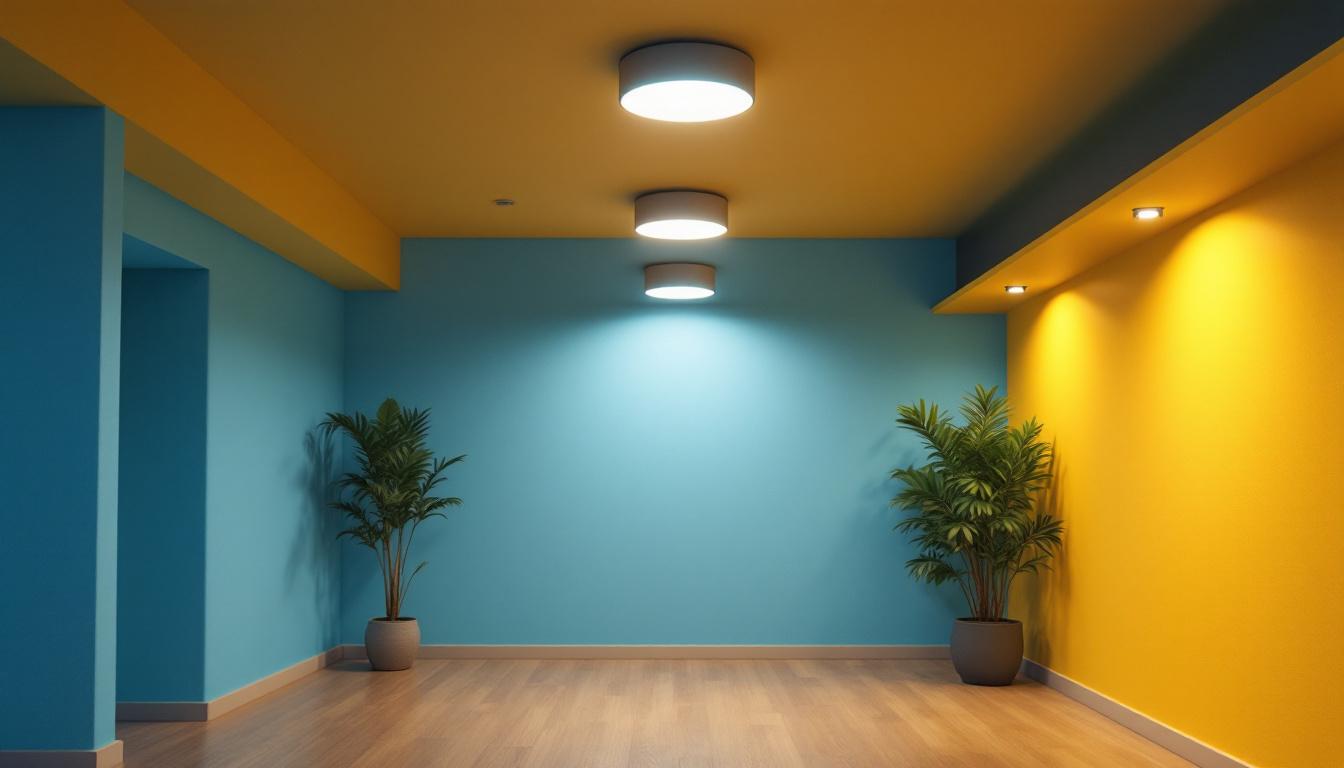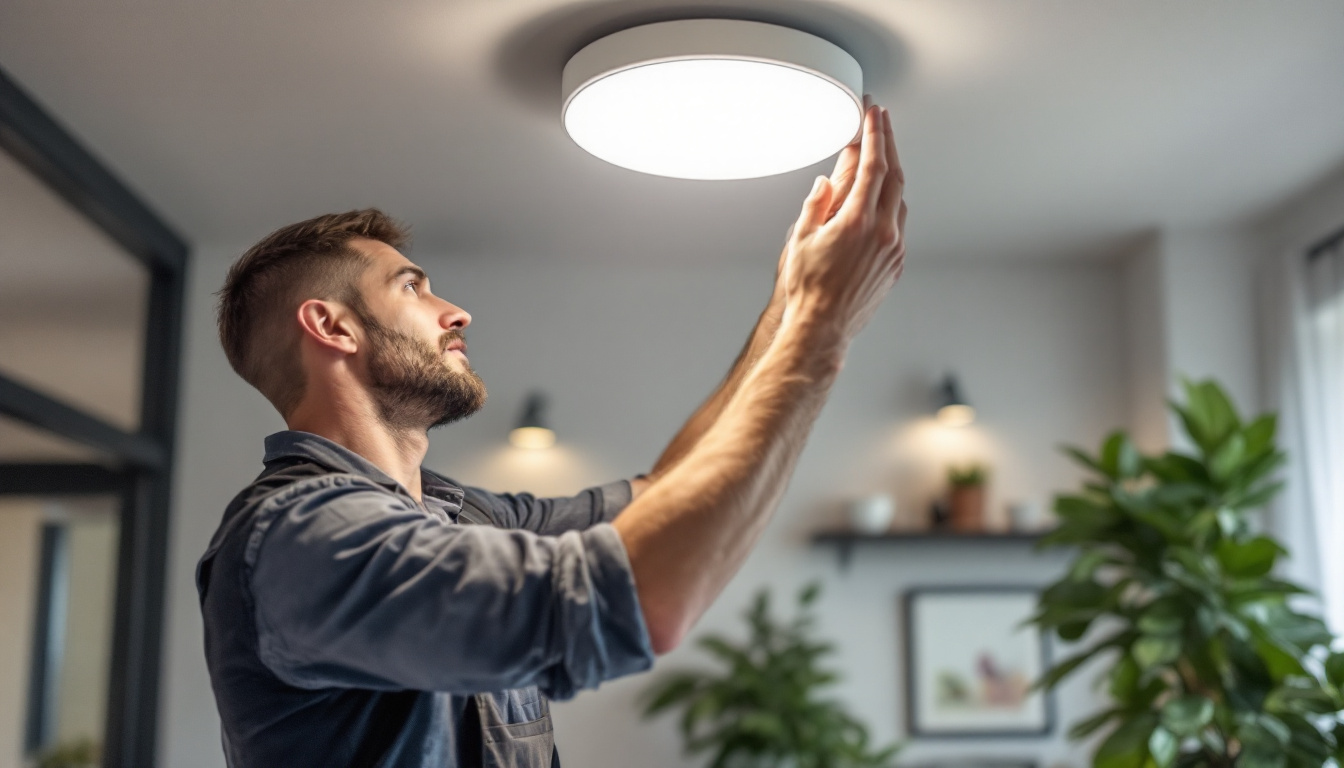
In the world of lighting, lumens are a crucial measurement that indicates the total amount of visible light emitted by a source. For lighting contractors, understanding how to interpret lumens is essential for creating effective lighting solutions. When discussing brightness, 4000 lumens is often a point of reference, but what does this really mean for various applications?
To put it into perspective, a standard 60-watt incandescent bulb emits approximately 800 lumens. Therefore, 4000 lumens is equivalent to the output of five such bulbs combined. This level of brightness is typically suitable for areas requiring strong illumination, such as workshops, kitchens, and retail spaces.
Lighting contractors frequently encounter situations where 4000 lumens is either the ideal choice or a miscalculation. For instance, in a commercial setting, such as a showroom, this brightness level can enhance product visibility and create an inviting atmosphere. Conversely, in a residential space, it may lead to harsh lighting that feels uncomfortable.
Understanding the context in which 4000 lumens is used is vital. Factors such as the size of the space, the color of the walls, and the type of activities taking place all play a significant role in determining whether this level of brightness is appropriate. For example, in a large open office, 4000 lumens can help reduce eye strain and improve productivity by ensuring that workstations are well-lit. However, in a cozy living room, this intensity might overpower the ambiance, making it feel sterile rather than inviting.
Moreover, the type of light source can also influence how lumens are perceived. LED lights, for instance, are known for their efficiency and can produce a high lumen output while consuming less energy compared to traditional incandescent bulbs. This means that a lighting contractor might choose to use fewer LED fixtures to achieve the same brightness level, thus optimizing both cost and energy consumption. Additionally, the placement of light fixtures plays a critical role; strategically positioning lights can help distribute lumens evenly across a space, minimizing shadows and creating a more balanced illumination that enhances the overall aesthetic and functionality of the environment.
Despite the wealth of information available, many lighting contractors still fall prey to common misconceptions regarding brightness and lumens. These misunderstandings can lead to poor lighting choices that impact both aesthetics and functionality.
A prevalent misconception is equating lumens directly with watts. While watts measure energy consumption, lumens measure light output. A contractor may assume that a higher wattage automatically means brighter light, which is not always the case. With the advent of energy-efficient LED technology, it’s possible to achieve high lumen output with significantly lower wattage.
This misunderstanding can lead to over-specifying lighting fixtures, resulting in unnecessary energy costs and potentially overwhelming brightness in a space. It is crucial for contractors to focus on lumens when selecting lighting solutions, rather than relying solely on wattage ratings. Additionally, the shift towards smart lighting systems has introduced even more variables, such as dimming capabilities and adjustable color temperatures, which can further complicate the decision-making process. Understanding the relationship between these factors is essential for optimizing energy efficiency while maintaining the desired lighting effect.
Another common mistake involves the perception of brightness. Factors such as color temperature and the distribution of light can significantly affect how bright a space feels. For instance, a 4000-lumen LED light with a cool white color temperature may appear brighter than a warm white light at the same lumen output, even though the actual light output is identical.
Contractors should consider not just the lumens, but also the color temperature and the intended ambiance of the space. This holistic approach ensures that the lighting meets both functional and aesthetic needs. Furthermore, the arrangement of light sources plays a pivotal role in how brightness is perceived. For example, strategically placing fixtures to create layers of light can enhance the overall atmosphere of a room, making it feel more inviting and spacious. Incorporating various types of lighting, such as ambient, task, and accent lighting, can also help achieve a balanced and visually appealing environment, allowing for both practicality and style.
Selecting the appropriate fixtures for a given lumen output is another area where contractors often make mistakes. The type of fixture can greatly influence how light is distributed and perceived within a space.
Different types of fixtures serve various purposes, and understanding their characteristics is essential. For example, recessed lighting can create a clean, modern look but may require more lumens to achieve the same effect as a pendant light. On the other hand, wall sconces can provide accent lighting that enhances the overall design without overwhelming brightness. Additionally, track lighting offers versatility, allowing for adjustable positioning to highlight specific areas or features in a room, making it an excellent choice for art galleries or retail spaces.
When aiming for 4000 lumens, contractors must consider the fixture’s design and placement. The same lumen output can yield different results depending on whether the light is directed upward, downward, or dispersed throughout the room. For example, fixtures that direct light upwards can create a soft, ambient glow that fills the space, while downward-facing fixtures may produce more concentrated light, ideal for task-oriented areas like reading nooks or workspaces.
Another critical aspect of lighting design is layering. Relying solely on one type of fixture to achieve a specific lumen output can lead to uneven lighting and shadows. Instead, a combination of ambient, task, and accent lighting can create a more balanced and visually appealing environment. This approach not only enhances the functionality of a space but also allows for greater flexibility in mood and atmosphere.
For instance, in a kitchen, 4000 lumens might be achieved through a mix of overhead lights, under-cabinet lighting, and decorative fixtures. This layered approach not only enhances functionality but also contributes to the overall aesthetic of the space. Moreover, incorporating dimmers into the lighting design can provide further control over the ambiance, allowing homeowners to adjust the brightness according to the time of day or the occasion. By thoughtfully considering the interplay of light sources, contractors can craft spaces that are not only well-lit but also inviting and harmonious.
Determining the appropriate lumen output for a specific area is a fundamental skill for lighting contractors. However, many professionals overlook essential factors that can lead to miscalculations.
The size of the room and its intended function are critical in calculating lumen requirements. A larger space will naturally require more lumens to achieve adequate brightness. For example, a living room may need around 100-200 lumens per square meter, whereas a workspace might require 300-400 lumens per square meter for optimal visibility.
Contractors should take the time to measure the dimensions of the space and consider its primary use. This ensures that the lighting design aligns with the needs of the occupants and the activities taking place.
The colors and materials in a room can affect how light is absorbed or reflected. Dark walls, for instance, will absorb more light, making a space feel dimmer, while light-colored surfaces reflect light and can enhance brightness. When calculating lumen requirements, contractors must account for these variables to avoid under- or over-lighting a space.
Incorporating these considerations into the planning phase can help contractors deliver a more effective lighting solution that meets the client’s expectations.
In today’s world, energy efficiency and sustainability are more important than ever. Lighting contractors must be mindful of these aspects when working with lumen outputs, especially when dealing with higher brightness levels like 4000 lumens.
LED technology has revolutionized the lighting industry, providing high lumen output with significantly lower energy consumption compared to traditional incandescent or fluorescent bulbs. When aiming for 4000 lumens, selecting LED fixtures can drastically reduce energy costs and minimize environmental impact.
Contractors should prioritize energy-efficient options not only for their cost-saving benefits but also for their long-term sustainability. Educating clients about the advantages of LED lighting can lead to more informed decisions and a greater appreciation for energy-efficient solutions.
In addition to energy efficiency, the longevity of lighting fixtures is another critical consideration. High-quality fixtures that are designed for durability can reduce the frequency of replacements, ultimately lowering waste and contributing to a more sustainable approach.
Contractors should advocate for products that offer warranties and have a proven track record of performance. This not only enhances client satisfaction but also aligns with sustainable practices in the lighting industry.
In the realm of lighting design, understanding the nuances of lumens and brightness is essential for contractors aiming to deliver exceptional results. By recognizing common mistakes, such as confusing lumens with watts, neglecting the importance of fixture selection, and failing to account for room characteristics, contractors can improve their lighting designs significantly.
Ultimately, achieving the right balance of brightness, energy efficiency, and aesthetic appeal requires a comprehensive approach. By prioritizing education and remaining informed about the latest advancements in lighting technology, contractors can enhance their expertise and provide clients with the best possible solutions.
As the industry continues to evolve, staying abreast of trends and innovations will ensure that lighting contractors remain competitive and capable of meeting the diverse needs of their clients. Embracing a holistic understanding of lumens and their applications will lead to more successful projects and satisfied customers.
Ready to avoid the common pitfalls in lighting design and ensure your projects shine with the right balance of brightness and efficiency? At LumenWholesale, we provide lighting contractors with the high-quality, spec-grade lighting products you need at unbeatable wholesale prices. Say goodbye to inflated markups and hello to a vast selection of industry-standard lighting solutions that promise reliability and high performance. With free shipping on bulk orders, you can stock up on premium lighting at the best value — all without hidden fees or compromises. Elevate your lighting game and experience the best in wholesale lighting with LumenWholesale.

Discover essential tips and best practices for lighting contractors to effectively utilize LED utility lights.

Illuminate your basement with energy-efficient ceiling light fixtures that blend functionality and style.

Discover the essential insights on garage LED lighting that every contractor should know.

Discover why flush mount LED lights are a game-changer for lighting contractors.